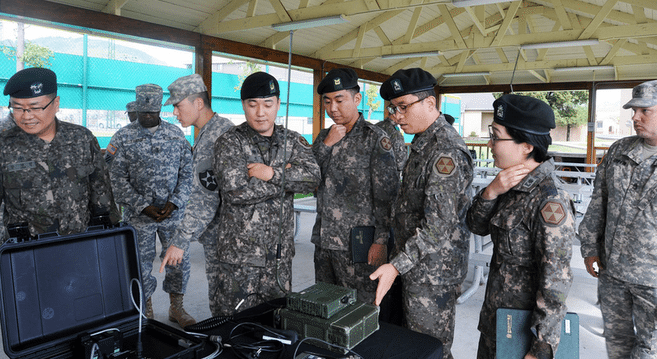The Republic of Korea (South Korea) and United States armies will stand-up a new, joint military formation this summer. The combined forces division, dubbed the “U.S.-ROK Combined Division” (or “ROK-U.S. Combined Division” 한미 연합 사단)*, will formally activate on June 3 at Camp Red Cloud in Uijeongbu, South Korea. The Combined Division will add South Korean staff officers to the existing U.S. 2nd Infantry Division command structure as well as an indirectly attached ROK mechanized infantry brigade, which will take part in all unit training. While U.S. and ROK military officials praise the Combined Division as a way to improve readiness against a potential North Korean attack, its advances in joint staffing and ROK Army officer development could also potentially alter the nature of joint training, as well as play an important role in any future transfer of the wartime operational control to the ROK military.
UNIT STRUCTURE
The Republic of Korea (South Korea) and United States armies will stand-up a new, joint military formation this summer. The combined forces division, dubbed the “U.S.-ROK Combined Division” (or “ROK-U.S. Combined Division” 한미 연합 사단)*, will formally activate on June 3 at Camp Red Cloud in Uijeongbu, South Korea. The Combined Division will add South Korean staff officers to the existing U.S. 2nd Infantry Division command structure as well as an indirectly attached ROK mechanized infantry brigade, which will take part in all unit training. While U.S. and ROK military officials praise the Combined Division as a way to improve readiness against a potential North Korean attack, its advances in joint staffing and ROK Army officer development could also potentially alter the nature of joint training, as well as play an important role in any future transfer of the wartime operational control to the ROK military.
UNIT STRUCTURE
Become a member for less
than $5.75 per week.
Unlimited access to all of NK News: reporting, investigations, analysis
The NK News Daily Update, an email newsletter to keep you in the loop
Searchable archive of all content, photo galleries, special columns
Contact NK News reporters with tips or requests for reporting
Get unlimited access to all NK News content, including original reporting, investigations, and analyses by our team of DPRK experts.
Subscribe now
All major cards accepted. No commitments – you can cancel any time.












